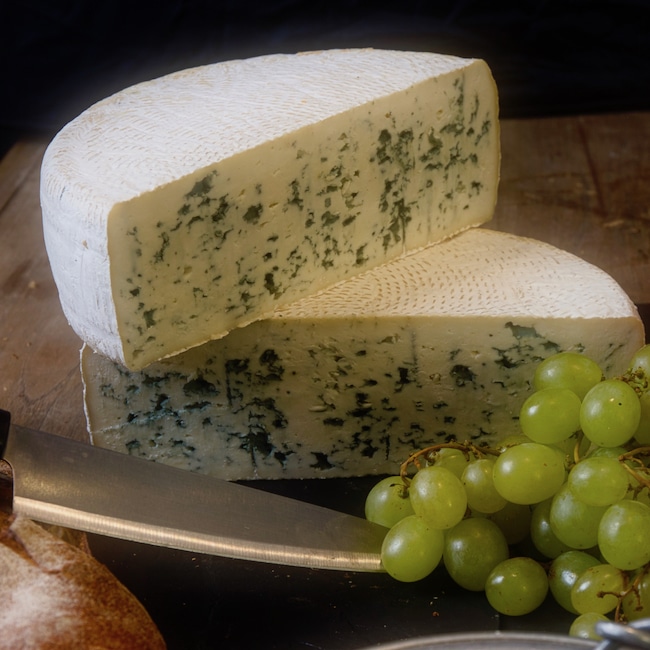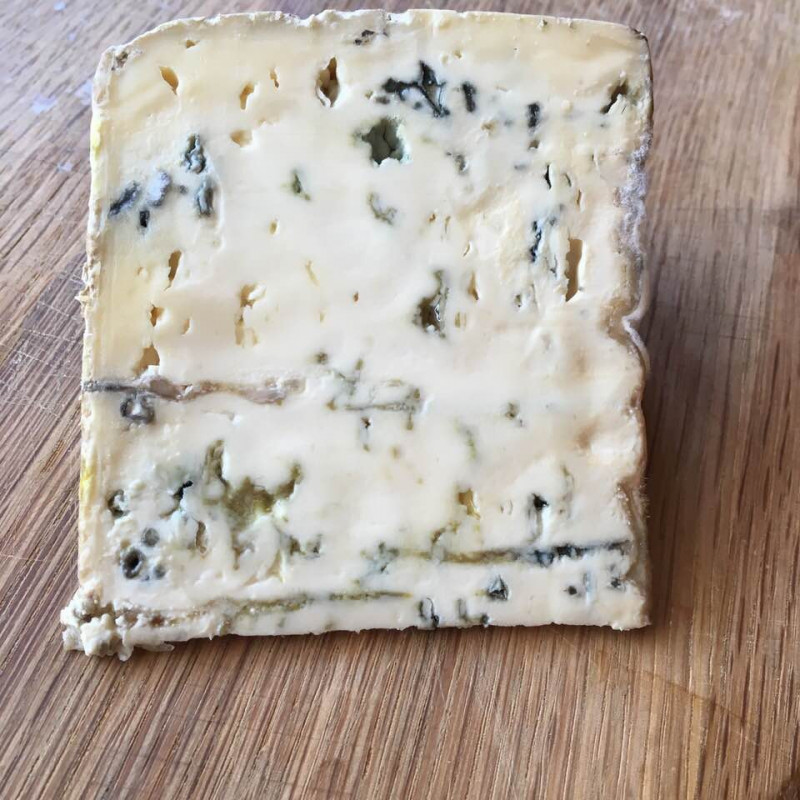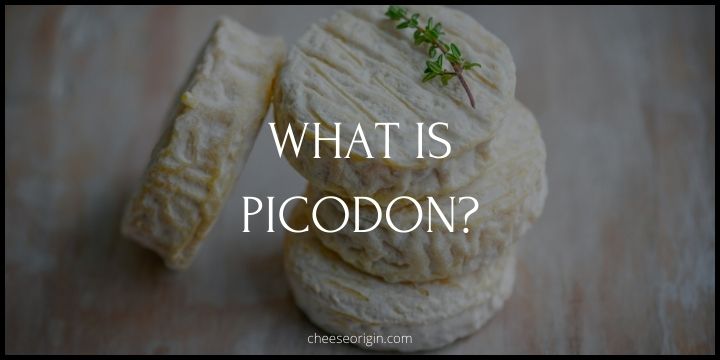What is Bleu de Chèvre? A Taste of France’s Rare Blue Cheese

Today, we’re journeying to the picturesque Loire Valley of France, a region renowned for its lush vineyards, stunning chateaus, and most importantly for our purposes, an extraordinary variety of goat cheeses. Among these, one stands out as particularly unique and intriguing – the Bleu de Chèvre, a rare and somewhat elusive blue cheese made from goat’s milk.
Often overlooked in favor of its cow and sheep milk counterparts, this gem offers a taste experience that is quite unlike anything you’ve encountered before in the realm of blue cheeses. It brings an unexpected twist to the traditional blue, melding the creamy, tangy characteristics of goat cheese with the bold, aromatic flavors associated with blue cheese.
If you’re someone who lives for those moments when you discover a new favorite cheese, or if you simply enjoy embarking on gastronomic adventures, stay with us as we delve into the world of Bleu de Chèvre. We’ll explore its history, uncover its origins, and provide some tips on how to best enjoy this rare taste of France.
Quick Facts About Bleu de Chèvre
| Country of Origin | France |
| Region | Auvergne, Rhône-Alpes, Midi-Pyrénées |
| Age | Minimum 3 months |
| Classification | Blue, semi-soft |
| Milk | Raw goat’s milk |
| Weight and shape | 3.6 kg (8 lb), Round |
| Size | Diameter 19 cm (7.5 inches), Height 10 cm (4 inches) |
| Taste | Strong, salty, creamy with a hint of goaty tang |
| Flavor profile | Tangy, Sharp, and Slightly Sweet |
| Pairing | Sauvignon Blanc, Muscat de Beaume de Venise, Fresh Figs |
| Texture | Soft, supple, smooth, creamy, crumbly |
| Nutritional Value | High in Protein, Calcium, and Vitamin B12 |
| Shelf Life | Approximately 3-4 weeks after opening |
| Color | White with Blue Veins |
What is Bleu de Chèvre?
Bleu de Chèvre is a type of blue cheese made from goat’s milk. Originating from France, specifically the Loire Valley region, this cheese is known for its unique and tangy flavor profile.
The cheese has a creamy and crumbly texture, with a white color punctuated by distinctive blue veins. These veins are a result of the Penicillium roqueforti mold, which is added during the cheese-making process to give the cheese its characteristic blue color and sharp, tangy flavor.
Bleu de Chèvre is aged for a minimum of three months, which allows it to develop a complex flavor profile that is tangy, sharp, and slightly sweet all at once. It pairs well with fruits, nuts, honey, and bold red wines, and can be used in salads, pizzas, or served on a cheese platter.
In terms of nutritional value, Bleu de Chèvre is high in protein, calcium, and vitamin B12. However, like all cheeses, it should be consumed in moderation due to its high fat and calorie content. The shelf life of Bleu de Chèvre is approximately 3-4 weeks after opening, but this can vary depending on storage conditions.
Note: the specifics of Bleu de Chèvre can vary depending on the producer and region, as cheese-making is an art form that is influenced by many factors, including the quality of the milk, the local climate, and the specific techniques used by the cheese maker.
What Does Bleu de Chèvre Taste Like?

The first thing you’ll notice is its tanginess, a characteristic trait of goat’s milk cheeses. This tangy taste is balanced by a sharpness that comes from the Penicillium roqueforti mold used in its production. The mold not only gives the cheese its distinctive blue veins but also imparts a deep, rich flavor that can be described as earthy and complex.
However, despite its intensity, Bleu de Chèvre has a certain sweetness to it. It’s slightly sweet and creamy, which helps mellow out the sharper flavors and adds to the overall complexity of the cheese.
The texture also plays a role in the tasting experience. Bleu de Chèvre is creamy and crumbly at the same time, which makes it melt in your mouth and leaves a lingering aftertaste that is both pleasant and moreish.
Bleu de Chèvre Tasting Notes
- Appearance: Bleu de Chèvre has a creamy and crumbly texture. Its color is predominantly white, interspersed with distinctive blue veins, a result of the Penicillium roqueforti mold.
- Aroma: This cheese offers an earthy and rich aroma. There’s also a slight hint of the barnyard that is typical of goat cheeses.
- Flavor Profile: The flavor is tangy and sharp, attributed to the mold used in its production. However, this sharpness is balanced by a subtle sweetness and creaminess, adding complexity to its overall flavor.
- Acidity: Bleu de Chèvre has moderate acidity, a characteristic trait of goat’s milk cheeses.
- Texture: The texture of this cheese is a delightful paradox. It’s creamy yet crumbly, melting in your mouth while leaving a lingering aftertaste.
- Aftertaste: The aftertaste of Bleu de Chèvre is memorable. It leaves a lingering tanginess on the palate, punctuated with subtle sweet notes.
- Pairings: This cheese pairs exceptionally well with full-bodied red wines. It also complements sweet fruits, nuts, and honey, providing a delightful contrast of flavors.
- Serving Suggestions: Bleu de Chèvre is versatile and can be served in many ways. It’s ideal for salads and pizzas, or simply served on a cheese board for a sophisticated appetizer.
What Pairs Well With Bleu de Chèvre?
Food that goes well with Bleu de Chèvre:
| Food | Description |
|---|---|
| Bagels with Raisins | The salty-sweet combo of Bleu de Chèvre and raisins in a bagel is a delightful pairing. The cheese plays off the sweetness of the raisins particularly well. |
| Fresh Figs | Fresh figs offer a sweet counterpoint to the tangy and sharp flavor of Bleu de Chèvre, making for a balanced and satisfying combination. |
| Aromatic Honey | Drizzling aromatic honey over Bleu de Chèvre enhances its subtle sweetness and complements its tanginess. |
| Beets | Beets have a naturally sweet and earthy flavor that pairs beautifully with the complex flavor profile of Bleu de Chèvre. This pairing can be enjoyed in salads or even in a grilled cheese sandwich. |
| Frisee | Frisee is a type of chicory with a slightly bitter taste. It provides a nice contrast to the creamy and tangy Bleu de Chèvre, especially when used in salads. |
| Balsamic Glaze | The sweet and tangy flavor of balsamic glaze complements the sharpness of Bleu de Chèvre, enhancing its flavor. This pairing works well in a grilled cheese sandwich. |
| Roasted Beet Linguine | Roasted beet linguine served with Bleu de Chèvre offers a blend of earthy, sweet, and tangy flavors, creating a comforting and delicious dish. |
| Dark Chocolate | Dark chocolate and Bleu de Chèvre might seem like an unusual pairing, but the bitterness of the chocolate and the tanginess of the cheese balance each other out, resulting in a unique and satisfying flavor combination. |
Also read: What Fruit Goes on a Charcuterie Board?
Beverage that goes well with Bleu de Chèvre:
| Beverage | Description |
|---|---|
| Full-Bodied Red Wine | The robust flavors of full-bodied red wines like Cabernet Sauvignon or Merlot complement the tangy and sharp flavor of Bleu de Chèvre. |
| Port Wine | The sweetness of Port wine balances the bold, tangy flavors of Bleu de Chèvre, creating a harmonious pairing. |
| Sauternes | Sauternes, a sweet French wine, provides a delightful contrast to the tanginess of Bleu de Chèvre. |
| Craft Beer | Dark craft beers, especially those with fruity undertones, can stand up to the bold flavors of Bleu de Chèvre. |
| Cider | The crispness and slight sweetness of cider make it a refreshing pairing with the creamy and tangy Bleu de Chèvre. |
| Champagne | The effervescence and acidity of Champagne cut through the richness of Bleu de Chèvre, making for an elegant pairing. |
| Whiskey | Whiskey, especially those with smoky and caramel notes, can provide a complex and exciting contrast to the flavors in Bleu de Chèvre. |
| Dry White Wine | A dry white wine like Sauvignon Blanc or Chardonnay complements the creaminess and tanginess of Bleu de Chèvre without overpowering it. |
Also read: Best Wine and Cheese Pairings: The Ultimate Guide
The History and Origin of Bleu de Chèvre

The Bleu de Chèvre is a unique and rare blue cheese that originates from France. Unlike most blue cheeses that are typically made from cow’s milk or sheep’s milk, like Roquefort, Bleu de Chèvre is made from goat’s milk.
Goats were among the first animals to be domesticated for food production, and goat’s cheese, or chèvre, has been enjoyed in various forms for centuries. The texture of chèvre is usually firm and slightly soft, with an intense, earthy flavor and a tangy finish.
Bleu de Chèvre specifically hails from the Loire Valley region in France. This region is known for its goat cheese production, with Loire River Valley farmers having cared for goats and transformed their milk into cheese for over a millennium.
The cheese is a traditional farmhouse cheese, suggesting that its production methods have been handed down through generations. It doesn’t have a fancy name — Bleu de Chèvre simply translates to ‘Blue Goat’s Cheese’.
Bleu de Chèvre is covered by a thin natural rind and has a dense paste with an herbal and lightly caprine flavor. It stands as a testament to the rich tradition of French cheesemaking.
Where to Buy Bleu de Chèvre:
- thefarmersdaughter.co – 100 g for $9.20
- titospeck.it – 650 g for €16,84
More Cheeses from France:





